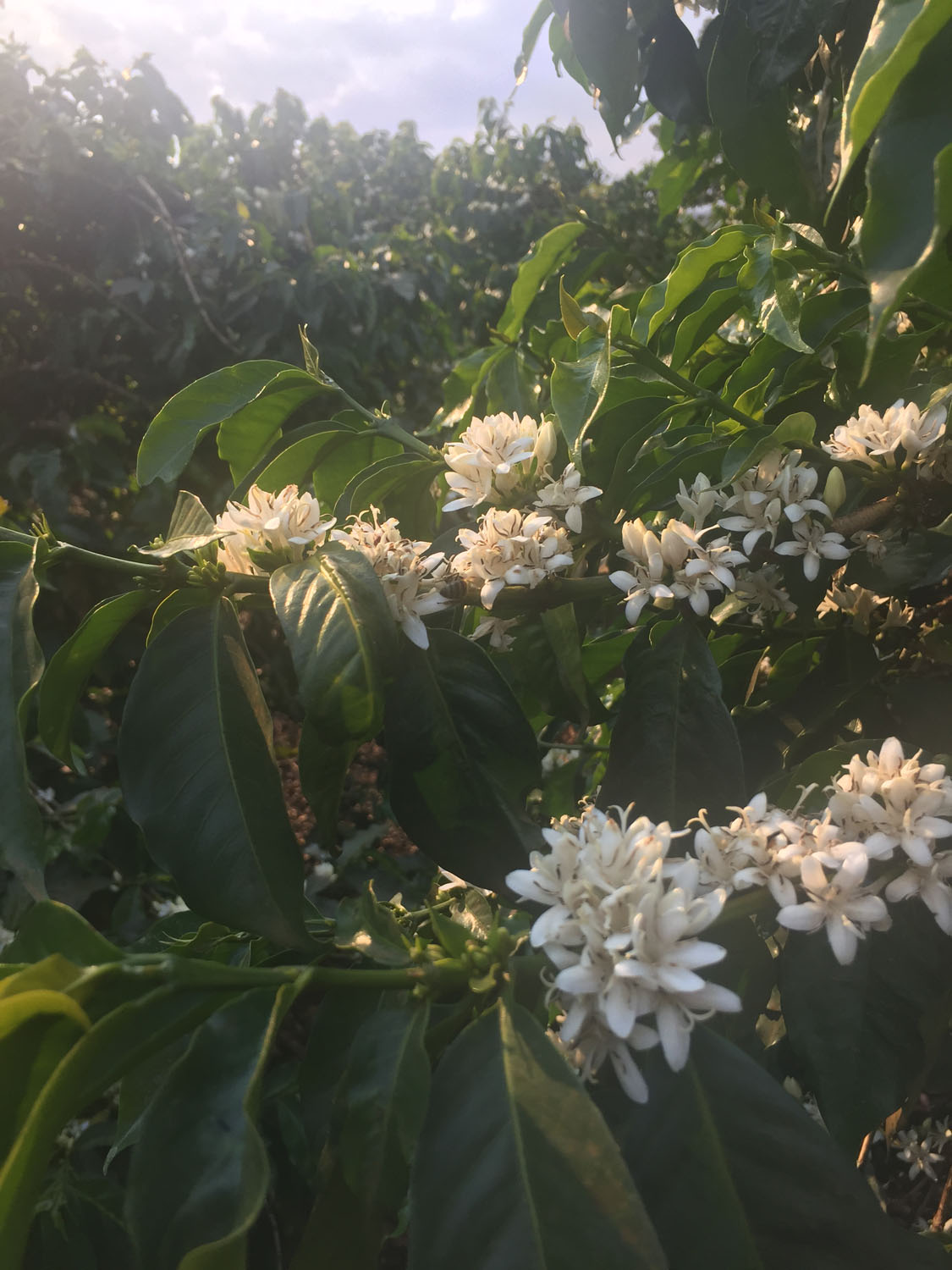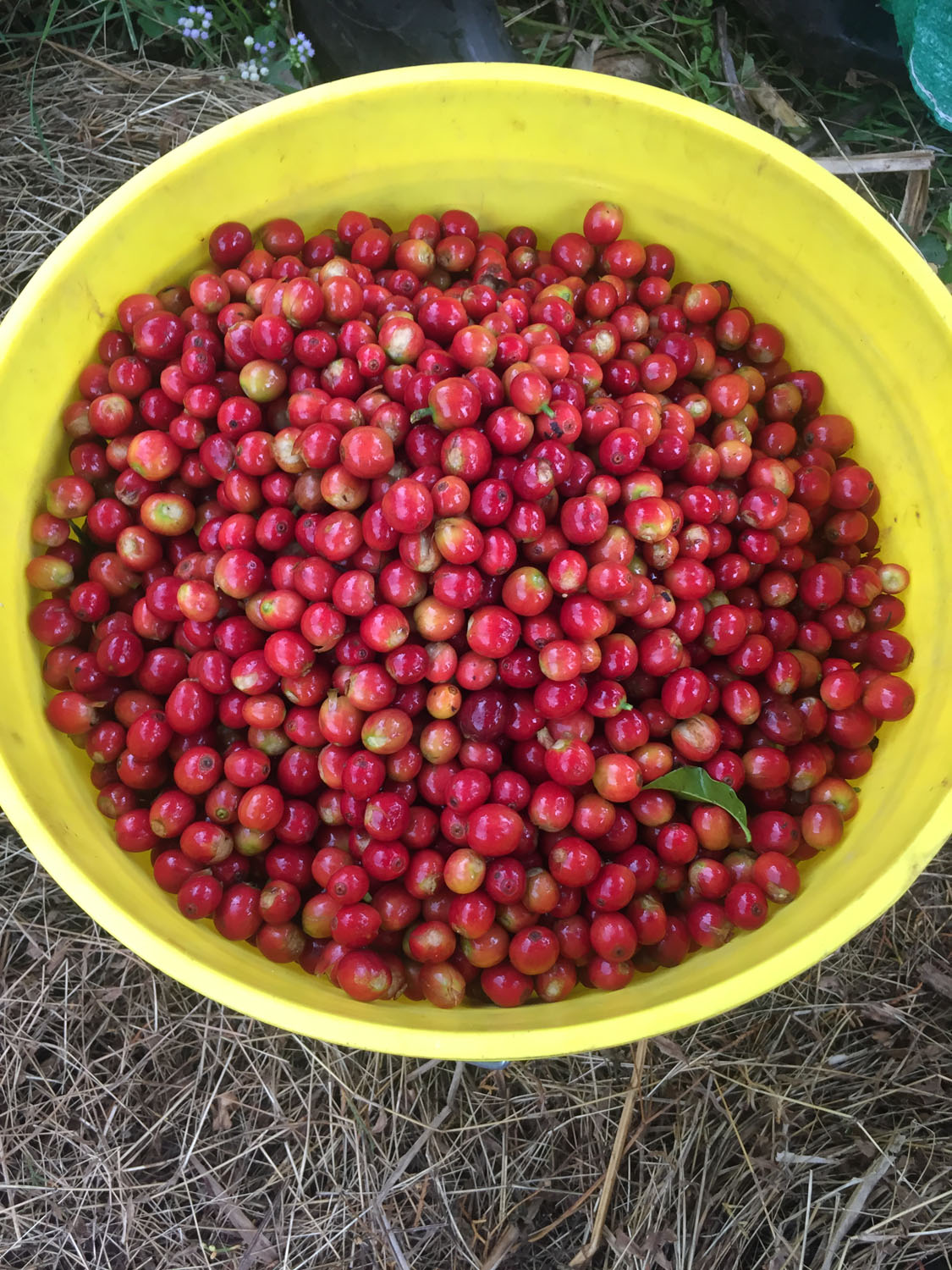1.
Slow down. Put away the cream and sugar. Savor this drink by itself.
So I begin my sensory coffee-brewing class.
Taste begins with the nose, and anticipation activates flavor long before anything enters our mouths. We revel in aromas so distinctively *coffee*—earthy smokiness, a hint of fire from roasted beans—but which also suggest more. Notice in your morning coffee ceremony, I tell my class, the way the brain dances with nose, mouth, and tongue.
We grind the beans. Smell them dry, smell them wet after hot water cascades through them. Smell when we turn the kettle’s spout to pour the liquid into porcelain cups as we wait for it to cool.
We focus the senses. In formal coffee tastings, “cupping sessions,” we turn off all devices that could beep and alarm our senses. Why invite interruption? To taste is to focus, to grip a moment tightly, to give undivided attention. “Tenere”, the same root as “sustain”—“sub” + “tenere”—to have and to hold.
We linger. All pleasure begins with language. Coffee’s lexicon is manifold: hints of strawberry, kiwi, freshly cut grass, toasted almond. Is the texture like velvet or leather? Is the aftertaste bright like a lemon, or bitter like vinegar? I encourage students to use their mother tongues to create their own comparisons. Our words shape taste.
In a novel by Yvonne Adhiambo Owuor, one Kenyan character only “trusted scent; it was for her an unfiltered presence, and therefore truth.”
But the truth of scent is as complex as the stories behind the words we use for coffee. I invite the class to hold new words on their tongues. Names for coffee varietals that may be new to their ears: Batian, Sidra, Landraces, Catuai, Kurume. Unfamiliar words move our tongues in new ways. Longer histories are found in other words than English: “qahwa” in Arabic; “kahveh”in Turkish; “kahawa” in Swahili. When our tongues bend to coffee’s origin words, they echo its first home: Kaffa, in Ethiopia’s clouded forests.
We loiter. Dawdle, tarry a while longer. The palate expands through words and memories. The tongue is a muscle you have to train.

2.
Kenya. Revise the story you thought you knew.
Margaret Atwood: “To know what you devour is to consecrate it, almost.” But how can anyone know the fullness of this genus Coffea, with its more than 124 species? Coffee is never only one thing.
Seventy percent of the world’s coffee is misnamed, thanks to a story created by a Swedish botanist. Obsessed with classifying plants, when Carl Linnaeus saw a dried coffee branch in a greenhouse in the Netherlands, he knew it wasn’t Jasminum arabicum, as a French botanist had named it. Linnaeus created a new genus: Coffea. But for all his taxonomical specificity, he was wrong about its epithet, for when he published its full name as Coffea arabica in 1753, he didn’t know that its origin wasn’t anywhere in Arabia. The seed came first from Africa, in the Kaffa region of southwestern Ethiopia, once called Abyssinia. Later, even after Linnaeus acknowledged Ethiopia as its birthplace, it was too late. The misnomer lingers on.
Coffee and colonialism have tangled ever since. Coffea was forced through many lands, including the part of British East Africa now called Kenya. There, the tools of men ravished forests and women for the sake of Coffea’s cash profits. Covetousness was renamed land title deeds; avarice labeled community development.
During Kenya’s Mau Mau revolution in the 1950s, thousands of women, imprisoned by British colonial officers who hired African men to guard them, were forced to clear forests for coffee plantations and dig ditches for coffee trees. Their reward? Less than half the meager income their husbands earned and violence too horrific to name.
Still, trees blossomed white flowers, covering Kenya with the scent of jasmine honeysuckle. Flowers transform to plump red cherries. The seed inside—not really a bean—will become green coffee that ships from port to port, passing through dozens of hands before it is roasted brown and transformed into drink.
This joe, this wine of Islam, this liquid gold, this devil’s brew: What we pay in cash, others have paid in sweat and blood. Bitterness is not a taste, but a sensation of dryness in the mouth.

3.
Kenya & Canada. Coffee seeds are a gamble. Last year I met a woman in the hills of western Kenya who argued—nervous but determined—with her husband: “Just give me a little space for coffee; let me try coffee,kahawa.” It’s new to this region, famous for tea. He gave her the worst plot of his land, a sliver enough for a dozen trees. Her fight for seeds is not only about coffee. He doesn’t know yet that coffee can improve his life too. No matter. Her seeds grow into the trees that will last twenty years under her care, long enough to send her children through school, even to university.
She picks bright-red cherries, filling a tall, lime-green agricultural bag, the kind with an external lining of water-resistant film, which makes it slippery to carry. A full bag weighs over one hundred and thirty pounds. When it’s almost full, she grips the top of the bag. Folding one side down, she forms one triangle, then the other, as if wrapping a Christmas gift. She tucks both sides in, making a kind of bonnet around her forehead. A bag of cherries, nearly as heavy as her, cascades down her back as she walks from her small farm, down a steep hill, across the long dirt road to the tarmac. She carries this bag so her daughters won’t have to. Then, four miles to the coffee factory. There, she stands in line to weigh the cherries on a scale, waiting hours to know their worth. After this, her cherries travel to places she’ll never go: on a truck to Nairobi, a train to Mombasa, a ship across the Indian Ocean to a roaster she’ll never meet. She waits for a note to confirm the income she’ll receive months later. Then, she begins the long walk back home to make dinner for her family.
Thinking of her, I fold my hands in gratitude as I sip coffee in a white-walled café in Nova Scotia. When I check out, I ask the barista for a one-pound bag of Kenyan beans. She hands it to me and I place it in my backpack among groceries and books. So many hands have held this coffee bag—dozens of women and men—and as I hold it too, I cherish the moment. “Accept the miracle,” wrote Mary Oliver.
Taste is more than what happens on my tongue.
These dispatches are from #VQRTrueStory, our social-media experiment in nonfiction, which you can follow by visiting us on Instagram: @vqreview.








